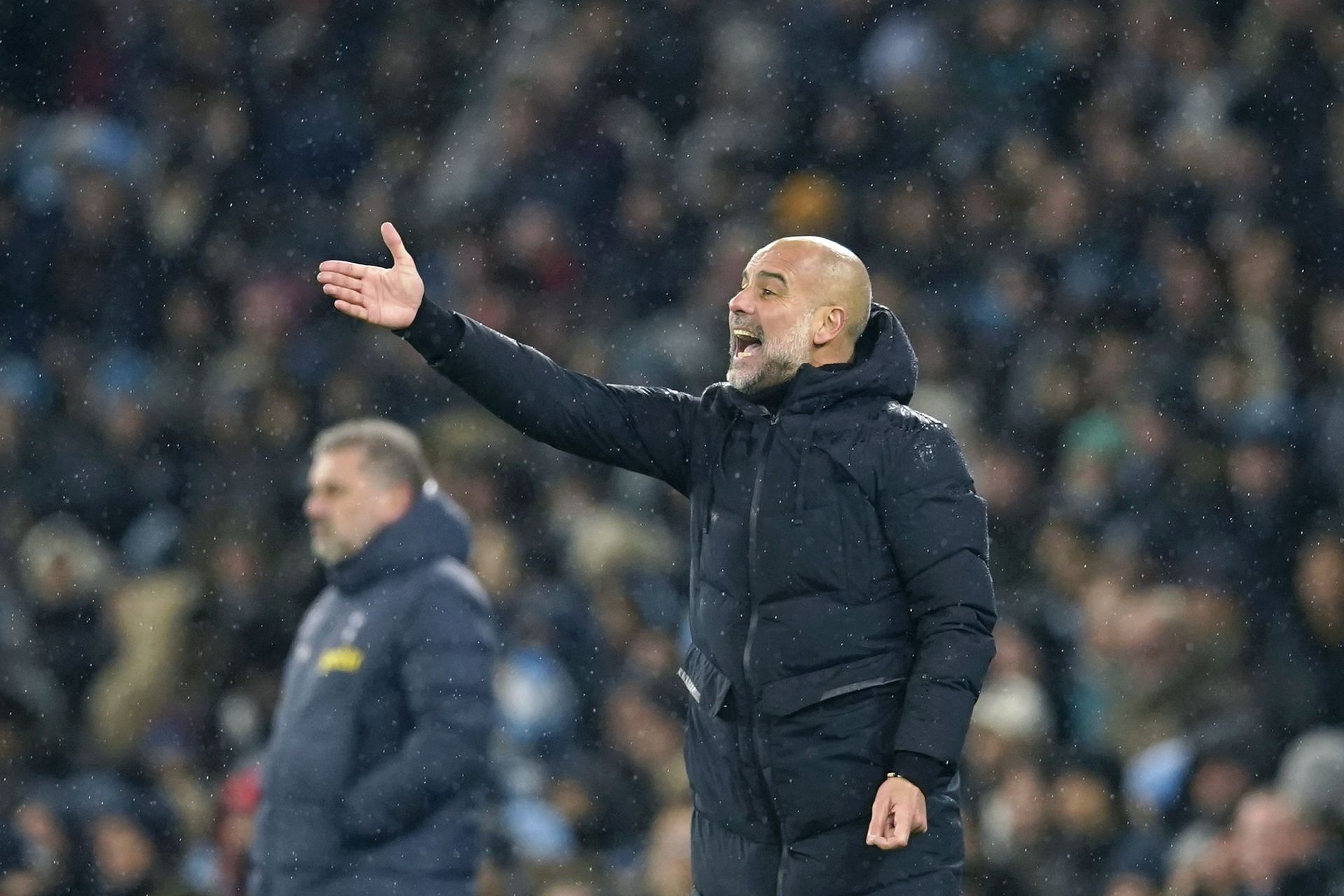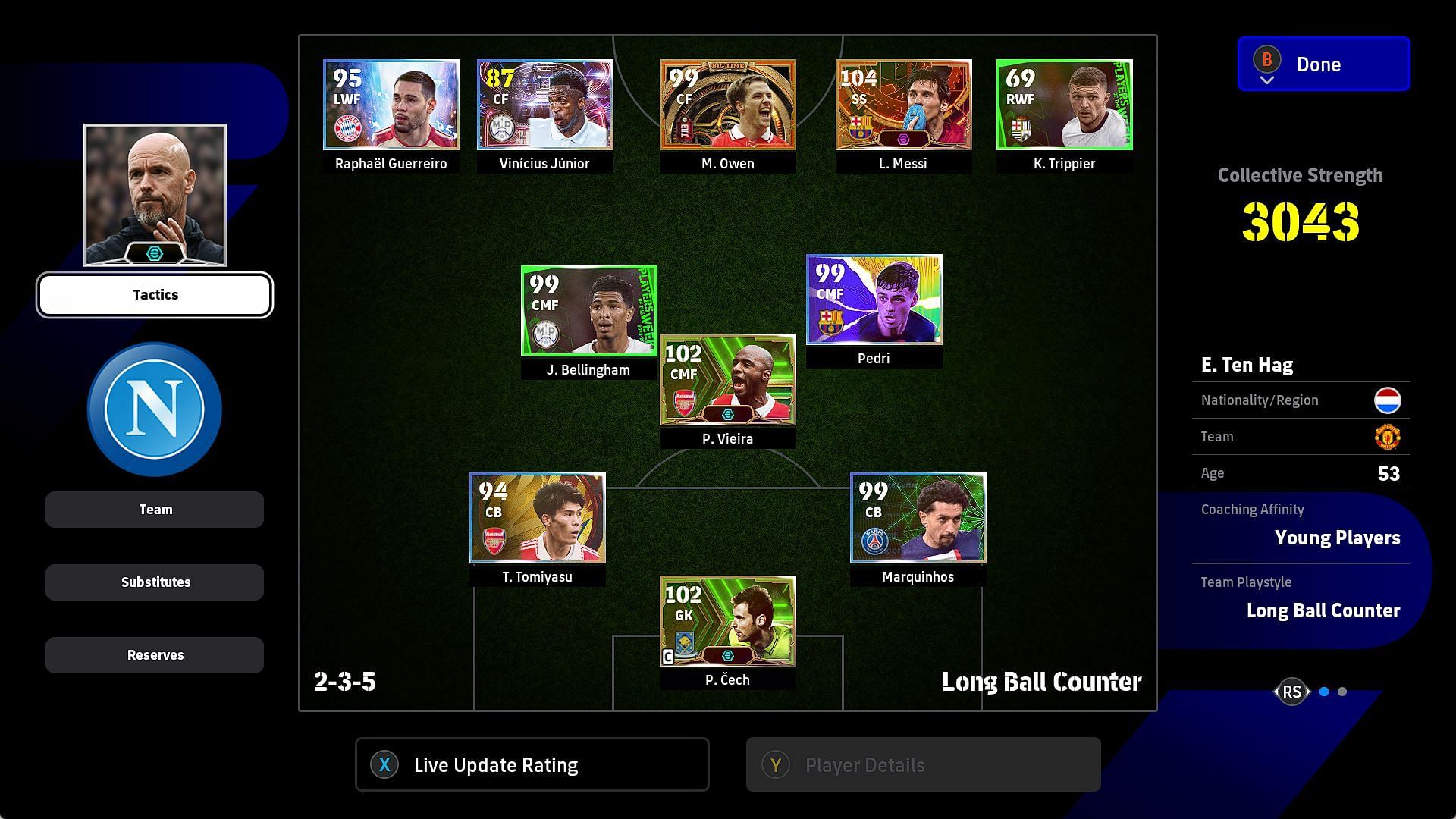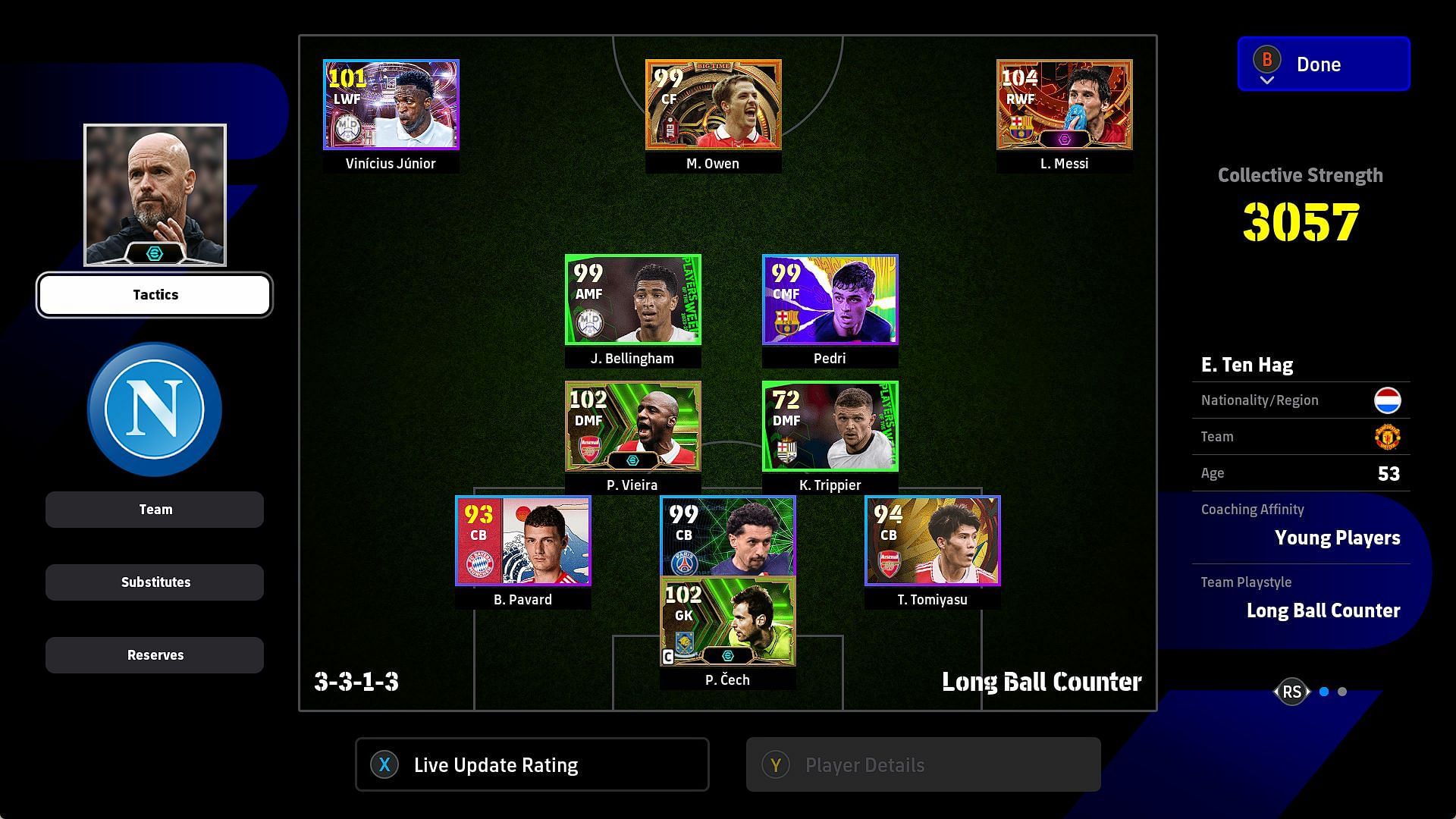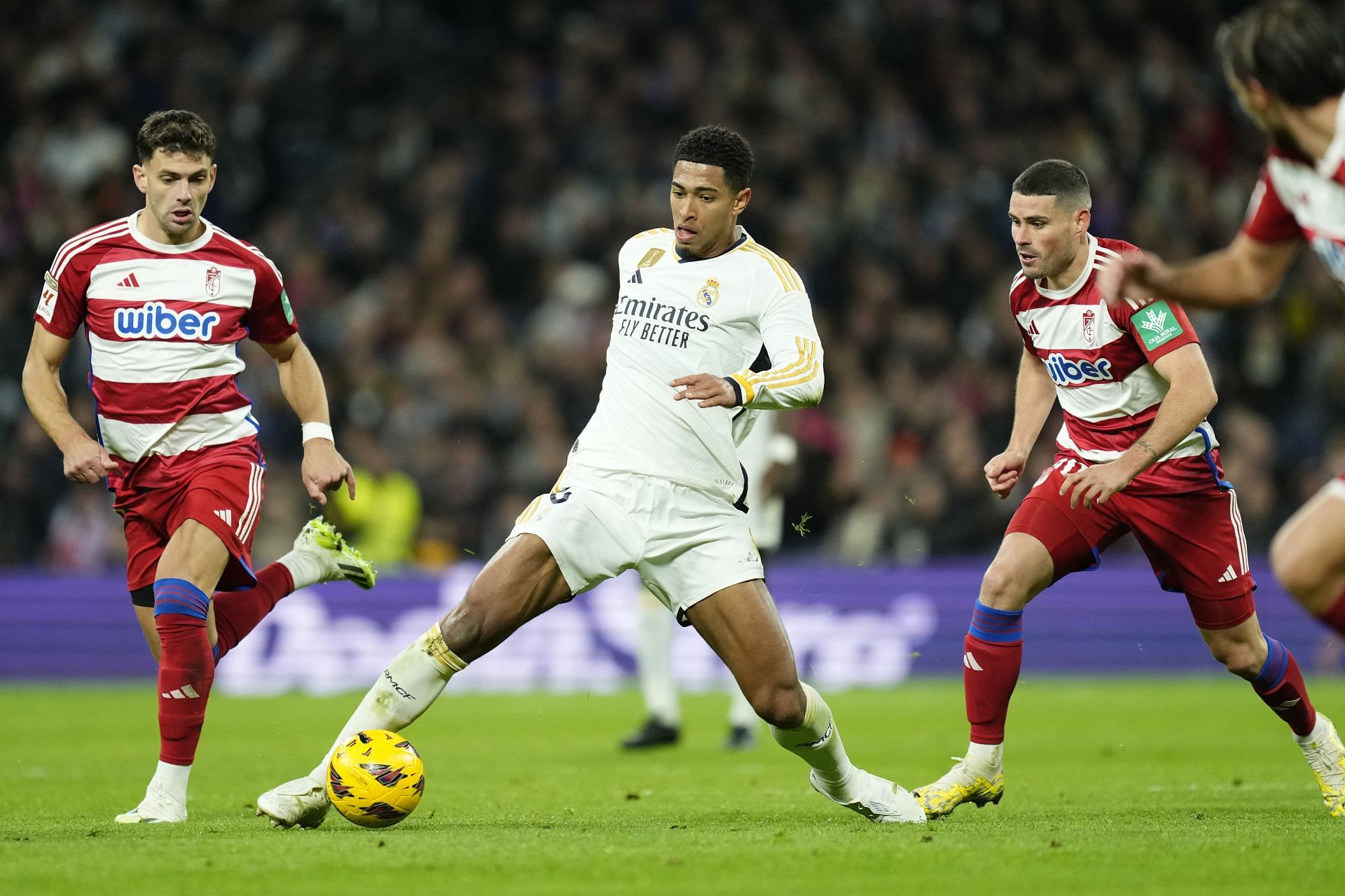
The evolution of the 4-3-3 formation: Tactics, nostalgia and the future
The 4-3-3 formation in football has led to the creation of some of the most exciting teams in the sport.
Cagey goalless draws may pique the interest of managers happy with the performances of their defenders or absolute purists. However, for a vast majority of viewers, football is often more entertaining to watch when teams attack and score goals, often using dynamic formations like the 4-3-3.
Managers are experimenting with new tactical approaches, mixing the old with the new in an attempt to create a formula that allows their teams to both seamlessly attack and defend. All formations must pass through the litmus test, perhaps none more so than the tried and tested 4-3-3.
What is a ‘traditional’ 4-3-3?
From a purely attacking perspective, the 4-3-3 formation has been a staple favourite with managers at the elite level. Traditionally, a 4-3-3 system allows for a greater involvement of the wide forwards in their attempts to exploit spaces on the flanks.
Not only do such forwards widen the pitch, they also provide a passing outlet for their teammates when the centre becomes congested. It's designed to stretch the opposition backline to enable a greater ease of third-man runs.

Real Madrid’s Jude Bellingham has been showing recently how an offensive midfielder can use the system to enhance his performances.
Jurgen Klopp’s Liverpool have based their Gegenpressing on this formation, as it allows greater forward mobility during counter-attacks. In short, the 4-3-3 is loved by all, especially teams with deep pockets who can afford fancy wingers.
That's why, the 4-3-3, which was loved by purists like Johan Cruyff, is arguably the most sacrosanct of all football formations. It's the romantic’s idea of how football is supposed to be played, even if Cruyff later became known for his ‘diamond system’.
Any changes to 4-3-3 should make football enthusiasts sit up and take notice of the recent new tactical developments in the world of football.
4-3-3 or the return of the 2-3-5?
In his book Inverting the Pyramid: The History of Football Tactics, football writer Jonathan Wilson expounds upon the 2-3-5.
It's a system that was first developed in Britain in the 1920s but was refined over time in other parts of the world. As attacking football was greatly sought after, even then, teams became more adventurous.
“It was in central Europe and South America, where attitudes to the British were more sceptical, that football began to evolve. The 2-3-5 formation was retained, but shape is only part of the matter; there is also style … others developed subtler forms of the game” – Wilson, p. 37
The 2-3-5 was arguably the first truly great attacking formation in football, apart from being one of the first fully developed systems. Teams began employing the shape until the 1940s in some form or the other, until defences were given priority.
However, if recent trends in football are to be believed, it seems that the 2-3-5 is making a comeback. It's being introduced very covertly by some of the most elite managers in world football. Under the guise of 4-3-3 or 3-5-2 or even 4-2-3-1, the 2-3-5 is ever present, in large swathes during some games.
Tactical paradoxes: The 4-3-3 in transition

There was a time not long ago when 4-3-3 purists like Pep Guardiola, Carlo Ancelotti and Jurgen Klopp did not have to think beyond the system. However, managers like Xavi Hernandez, Erik ten Hag and even Guardiola himself have been employing five forwards at the top.
In recent games, Xavi asks his forwards to form a five-man forward line to stretch the opposition teams to the limit. Nowadays, Ronald Araujo and Andreas Christensen form the two-man backline, with Frenkie de Jong being the midfield pivot.
Two other players, usually Pedri and Ilkay Gundogan play as the holding midfielders. In attack, the two full-backs Alejandro Balde and Joao Cancelo push high up, already supplementing the attacking wingers Raphinha and Joao Felix.
Robert Lewandowski operates as the lone striker, helped by the other four ‘forwards’ in the modified 2-3-5 system.

The most interesting aspect of this shape is that while on paper the team lines up in a traditional 4-3-3, the two full-backs make all the difference when they push up and join the attack, creating a five-man forward line.
Not all teams use the full-backs so high up the pitch, though. The emphasis is now on finding players in the central areas of the pitch by creating a box-like structure in midfield, creating overloads with an extra man.
The full-backs, who were till now content just hugging the touchline, have now become inverted wingers, coming inside and forming a midfield shape.

Managers like Tottenham’s Ange Postecoglou and Brighton & Hove’s Roberto de Zerbi have also used the 4-3-3 differently by creating this box shape.
The idea is to defend with five players and attack with five, having the mobility to adapt to match-situations. Postecoglou explained in a press conference:
“Part of us being an effective team and hard to stop is that what is a rigid structure looks very fluid.”
The 4-3-3 has evolved right before our eyes

What we can clearly see is that the 4-3-3 is no longer serving the purpose that it once did.
Instead, managers have had to make tactical tweaks and minor adjustments to the shape to make the formation work. Increasingly, there has been a marked rise in the use of three-man backlines, with the full-backs occupying more of the half spaces in the final third of the pitch.
Such changes are a testament to the fact that more and more teams are now looking to play offensive football as opposed to games where the aim was to grind out a cagey 1-0 win. Teams have become more adventurous, willing to take risks and score carefully coordinated goals.
So, while it's nostalgic to see highlights of Pep Guardiola’s Barcelona or the fearsome BBC of Real Madrid, we cannot forget the fact that those systems have already served their purpose.
Teams employing the 4-3-3 today, at least in the elite leagues, do it very differently than how it was played even half a decade ago.
Formations are an illusion in modern football

It's quite common nowadays to see managers switching to various different formations in the same match. I
n fact, in an interview, Mikel Arteta of Arsenal confessed to having used 43 different formations against Manchester City.
“The other day there were 36 different formations in the match (against Fulham). Against Manchester City 43. I don’t know what formation we’re talking about” - Mikel Arteta
The crux of the matter is that no matter how teams line up on paper, they almost always move to a different shape as and when the game demands. The idea that teams ‘stick to a shape’, as they once did, no longer holds true.
Perhaps football is returning to its roots. More than hundred years ago, Tom Boyle, who captained Burnley and Barnsley during his time as a player, said about systems in football:
“In football, the tactics adopted must always be in relation to the ability of the men on the side to carry them out successfully. Because of this, it is hard to lay down hard and fast rules” – Wilson, p. 29
However, there's no denying that all teams have a default system in place from which they make their tactical adjustments. Maybe 2-3-5 is the next avatar of not only 4-3-3 but all football formations of the future.